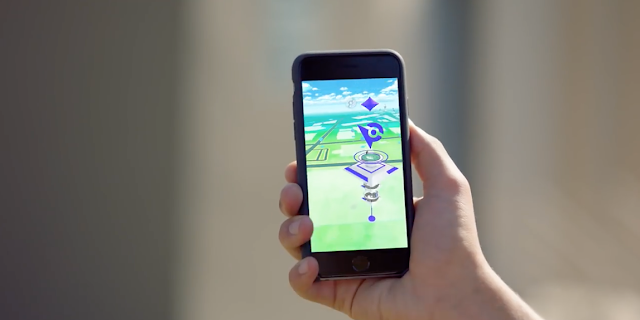Pokémon Go: Marketing Lessons for the Non-Believers
Karina Welch of Blue Fountain Media Shares the Hidden Potential of SoLoMo for Marketers a la Pokemon Go
 |
| Pokemon Go Map (courtesy of Niantic Labs) |
Record breaking mobile app, Pokémon Go, now has more users than any other mobile game – ever. Since the apps launch just a few weeks ago, the global marketing community has been scrambling to create content their respective clients can share as a way of joining the conversation.
When the game originally launched, users were spending more time on the app than Facebook, Instagram, or Snapchat – a statistic that no marketer should ignore. Although the initial Pokémon fever may have broken, the inevitable app updates and in-game sponsorship opportunities will no doubt inject a few more lessons into the marketing community before we’re all truly ready to move on.
In the meantime, Pokémon Go’s done a decent job converting some non-believers (myself included) of certain marketing technologies and clichés. Believe I’ve highlighted 3 major lessons I’ve learned:
SoLoMo: A bad buzzword, but nonetheless, a massive opportunity.
SoLoMo Marketing, otherwise known as Social Local Mobile Marketing, is the combination of social media and location-based marketing – think GroupOn, Four Square, and Yelp. Pokémon Go’s ability to combine the two and display real-life, dramatic increases in foot traffic make it possible for marketers to imagine a world where mobile and social drive such dramatic off-line results.
Augmented Reality, for the people!
Call me naive but I was on the ‘AR won’t fully take off for another 5 years’ party. Although being widely adopted in certain sectors such as the automotive and retail industries, Pokémon Go was able to make it an ‘everyday’ thing.
I believe this was not a one-time thing, or a get lucky thing – it is the beginning of what may turn out to be the most disruptive trends in the digital marketing space, with investors reaching $1.1 billion in the first two months of this year alone – we’re talking B.P. (before Pokémon Go).
The possibilities now seem endless in which ways brands can communicate and engage with consumers in the AR space, not to mention the new consumer behavior patterns that are likely to arise.
Branding opportunities, bursting the comfort bubble:
More woman than men are playing the game, and by a lot! Forbes recently reported that 63% of Pokémon Go players were female. And to break down the 23-28 year old ‘man-child’ stereotype even more, 47% of players are either 13-17 years old, or 30-50 years old. So what does this mean for brands that are quick to rule out opportunities based on preceded stereotypes? It’s time to re-think the norm of targeting demographics, and re-think the possibilities and boundaries when looking towards brand partnerships.
As I mentioned earlier, as much as many people would like to see the last of Pokémon Go, the app still has so much potential. All eyes are on how Nintendo and their partners roll out the games feature set and advertising opportunities that ensure engagement is maximized.
We quizzed a few of the office Pokémon masters on what they’d predict the next steps are for the game, check out a few of their suggestions:
- The ability to speed up incubation periods by purchasing a product or visiting a store.
- The ability to have Pokémon created specifically for your brand, charity or team.
- The ability to battle a brand for something in exchange (i.e. discounts, special offers).
- The ability for brands to sponsor tournaments at Super Gyms. Sponsorship in the form of both in-game and in-person: i.e. events around major hubs welcoming trainers – Brands have the ability to provide giveaways.
- More teams – obviously, and the ability to be able to sponsor these teams. By being an ambassador for a brand or a cause you earn points and the more points you earn the greater the reward from that brand or sponsorship.
- Evolutions should also allow for revolutions to decorate your Pokémon in branded clothing and accessories.
- Brands can sponsor “treats” to give to your Pokémon - Snickers satisfies even the hungriest Pokémon!
- Claiming your location should also allow you to write meta data – descriptions so that they show up on the Pokéstops.
- Pokéstops should rotate and change daily – pay for specific days for being a Pokéstop or gym to bring awareness to a special discount, sale day or event.
I’d love to know your thoughts on the potential the app holds for marketers and brands alike. Let me know your thoughts by tweeting @BFMweb.
Karina Welch (@karinawelch) is a marketing specialist at Blue Fountain Media (@bfmweb); a New York City based Digital Agency focused on growing brands online.
Featured on

Comments